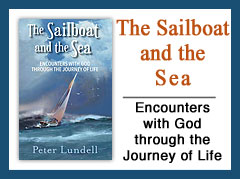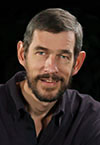Think about the most important questions you can ask.
“Where’s the restroom?” can be temporarily important, but most of your questions will probably go beyond daily routines, perhaps touch questions of life and death, suffering and injustice, meaning and purpose. If you think about the most important things you do with the life you live, they’ll probably have something to do with how they influence other people and how they influence the eternity you spend after your earthly life is over.
Then if you look at how a lot of people tend not to ask questions beyond “Where’s the restroom?” you might wonder at the willful ignorance that many maintain throughout their lives. And if you consider the quest for money, sex, power, and fun, you might wonder the same thing again. People conduct their lives as if they’ll get out of this world alive.
No one gets out of this world alive.
Among the most important things a person can do is pursue what is ultimately true, purposeful, and real. Not only will it make a difference in the eternity we spend, it will also influence, even define, how we live our lives on earth.
The idea of ultimate truth may be pursued in many different ways, for example, religion, science, philosophy, meditation, art, experiences, worship, and prayer.
Postmodernism typically denies that an ultimate, eternal reality or truth even exists. Everything is socially constructed and relative. But postmodernism offers no alternative—like someone who takes your house apart because the house is imperfect then leaves you homeless and walks away. As a worldview paradigm postmodernism implodes into its own lack of coherency and sustainability.
I’m not going to argue for modernism either. It has its own set of flaws rooted in the pride of thinking we can know anything absolutely (absolute truth is different from thinking we know something absolutely). It also assumes we can categorize everything, while on further realization we find much that defies what we think we know. It’s like someone looking into a clouded mirror and claiming to see clearly. The ancient writer Apostle Paul understood this (1 Corinthians 13:12).
Rather, beyond all our “isms” lies something that is essentially out of reach as long as we are limited to our four-dimensional space/time existence. Thankfully “out of reach” does not mean out of contact.
In the following articles I express why I am convinced that ultimate truth and reality has everything to do with God of the Judeo-Christian understanding. This God is the only one that is textually authentic, archeologically validated, philosophically consistent, and scientifically compatible. If you read through the following articles, you’ll see what I mean.
—-
Photo credit: Beverly & Pack www.flickr.com/photos/walkadog/4040601873/









These are some of my thoughts on eternal reality.
Philosophy
“This universe is a trinity and this is made of name, form, and action. The source of all names is the word, for it is by the word that all names are spoken. The word is behind all names, even as Eternal is behind the word.”
…. Upanishads BC 800
Theology
“In the beginning was the Word, and the Word was with God, and the Word was God.”
…. John 1:1 King James Version
Science
Using a Venn diagram one can illustrate the above assertive quotations as a construct of “Cognitive Science”.
The “name” is equivalent to a “sign”, a synonym. “form” is equivalent to a “symbol”, a representation. Each of the two elements may be drawn as Venn circles, and where they overlap illustrates the principle of “concept” described as “action” by Upanishads. This cognitive process, or “action”, happens only when the elements are intrinsically related, meaning held in the proper context.
The more accurately the sign and symbol close and superimpose on the Venn, the clearer and more specific is the concept. Everything known, viewed, or understood, is a mental construct/concept an “action”. Cognition is the mental process to that end. The Venn circles move closer to convergence as clarity of concept improves until finally the circles totally converge becoming an isomorph, an “icon” or near perfect conceptual analogy exemplifying essence or truth. (The religious icon works nearly the same way, but are a topic for another paper.)
Functionally, Upanishads’ “Trinity” seems to me to explain the same Trinity known as “The Father, the Son, and the Holy Ghost. The “Father” being the “Word”, the “Son” being the “form”, and the “ Holy Ghost” being the “action” (The action is God’s man on earth becoming the Christ.)
Some might see this process as “Thesis”, “Antithesis”, and the resulting “Synthesis”. Thesis being God the Word; antithesis being God’s Son “man” in form or flesh; and Synthesis being the Christ.
• “The thesis is an intellectual proposition.
• The antithesis is simply the negation of the thesis, a reaction to the proposition.
• The synthesis solves the conflict between the thesis and antithesis by reconciling their common truth and forming a new proposition.”
As you can see, there are several implications in this knowledge dealing with Philosophy, Theology, and Cognitive Science. I see a universal principle with God governing all three.
Copyright 2009, Stanley Buck
Stanley, Thanks for your input. Interesting perspective, quite different from mine but certainly worth the interaction. One might respond by questioning or exploring the parameters or limits of cognition in this sphere of discussion, particularly when related to the Upanishads, which are themselves non-rational to varying degrees. Just a thought. I appreciate yours as well.